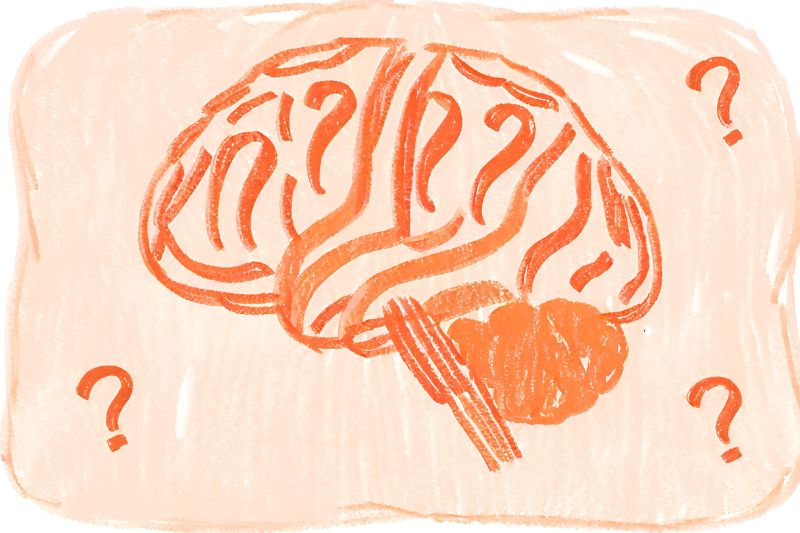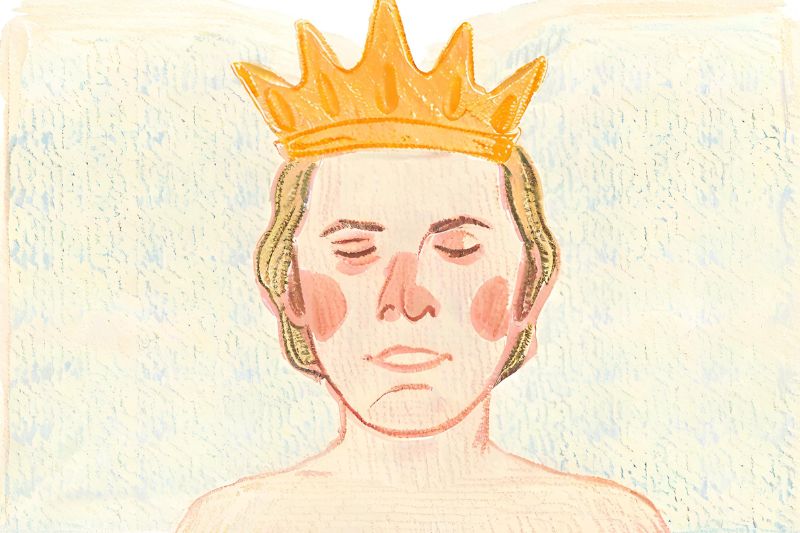Two Effective Treatments for Sleep Anxiety and Insomnia:
CBT-I and MBT-I
Suffering from sleep anxiety or insomnia? Treatments like CBT-I and MBT-I can help you overcome this issue to get a good night's sleep. Join ManageMinds as we find out how...
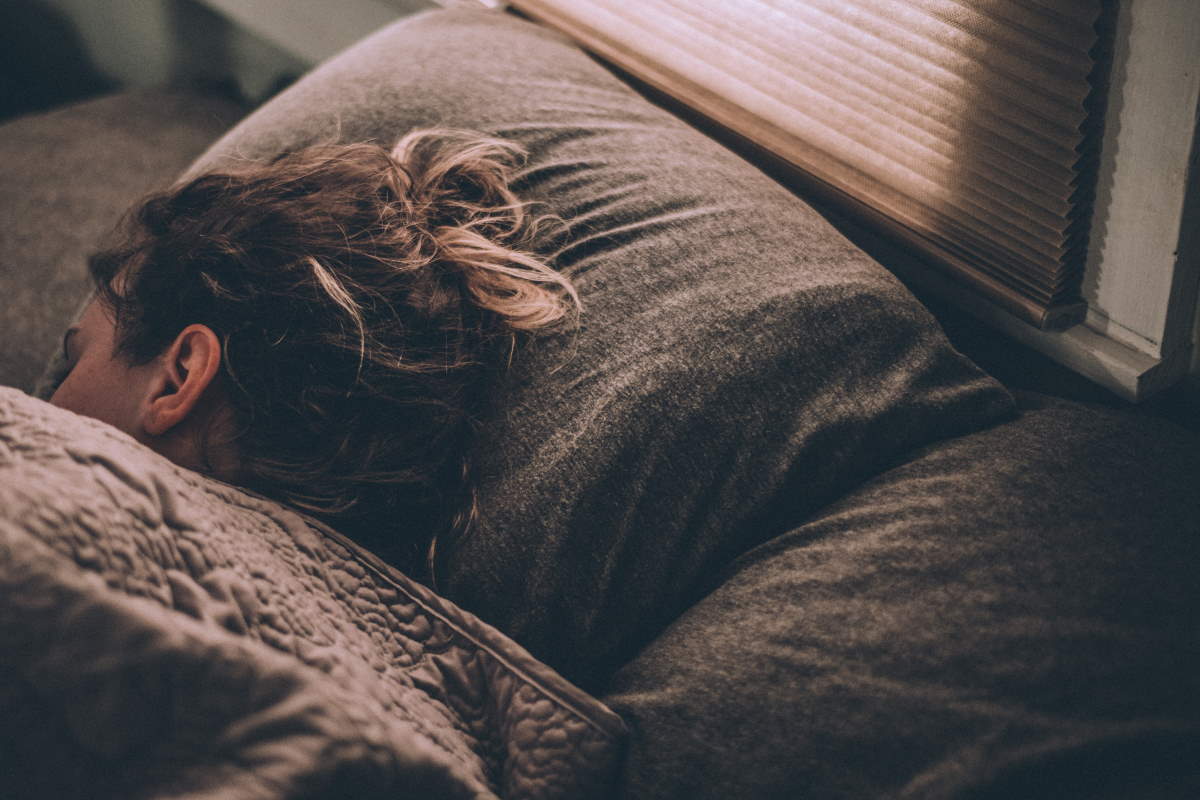
Everyone wants to be able to get a good night’s sleep. When you’re dealing with conditions like sleep anxiety or insomnia, however, it can be difficult to achieve. Fortunately, there are many effective treatments available that can help people fall asleep faster and for longer.
Cognitive behavioural therapy for insomnia (CBT-I) and mindfulness-based therapy for insomnia (MBT-I) are two leading therapeutic approaches that can help to address the underlying causes of sleep problems so that you can get quality sleep.
Table of contents
- What is sleep anxiety?
- Cognitive behavioural therapy for insomnia (CBT-I)
- Mindfulness-based therapy for insomnia (MBT-I)
- How effective are CBT-I and MBT-I?
- The bottom line
What is sleep anxiety?
Sleep anxiety is a sense of fear or concern about going to sleep. People who experience this type of anxiety tend to be apprehensive about not falling asleep, not being able to remain asleep, or events that may occur while they are asleep. In more extreme cases, this anxiety can become a fear of sleep. This is also known as somniphobia.
Sleep disorders and mental health conditions, like anxiety, will often overlap. For example, if you suffer from an anxiety disorder like GAD, you might struggle to fall asleep due to excessive worry. Similarly, if you have insomnia, you might experience symptoms of anxiety when your sleep is insufficient.
What are the symptoms of sleep anxiety?
When you’re struggling to sleep due to intense anxiety, or a fear of falling asleep, you may experience a range of behavioural and physical symptoms, such as:
- Restlessness
- Feeling overwhelmed
- Nervousness
- Sense of impending doom
- Irritability
- Difficulty focusing
- Digestive issues
- Increased heart rate
- Rapid breathing
- Sweating
- Muscle tension
In some instances, individuals may even experience nocturnal panic attacks, which can wake them from sleep. Over time, sleep anxiety can make it extremely difficult to get enough sleep at night. As a result, it’s not uncommon for sufferers to develop insomnia.
How to treat sleep anxiety
Dealing with conditions like sleep anxiety and insomnia can be frustrating and deeply upsetting. The longer it persists, the more desperate you can become in the pursuit of a good night’s sleep—causing further stress and anxiety, more sleepless nights and a vicious, never-ending cycle of exhaustion.
Sleeping aids and medications can effectively treat some symptoms of sleep anxiety and insomnia, but they’re not always the best long-term solution for such extensive issues. This is where treatments like CBT-I and MBT-I come into play.
Cognitive behavioural therapy for insomnia (CBT-I)
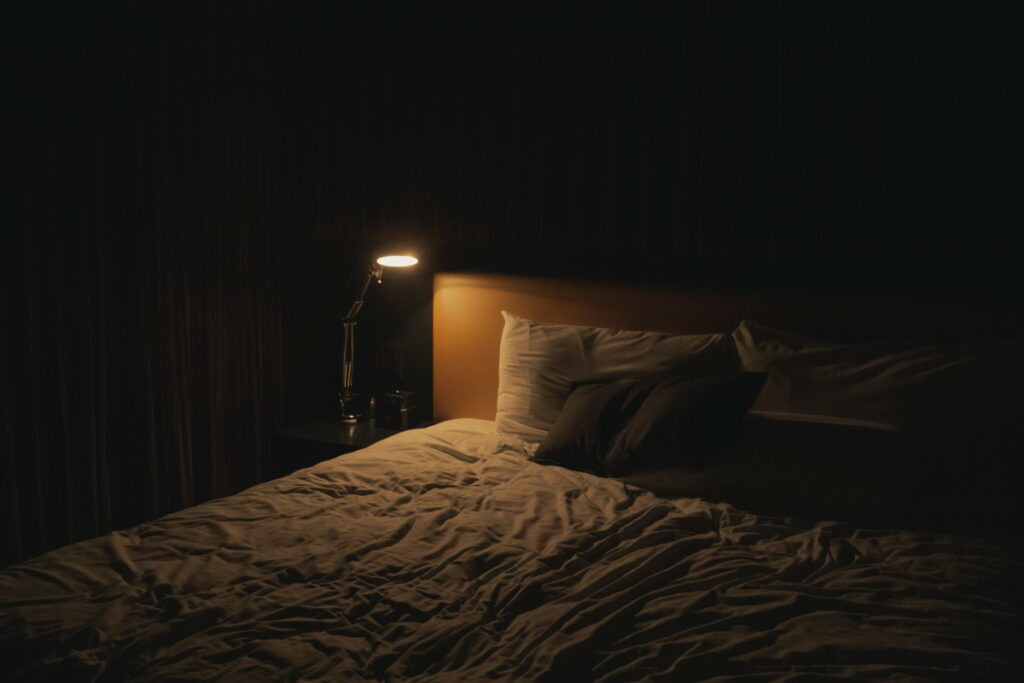
Cognitive behavioural therapy for insomnia is a therapeutic approach that addresses the unhelpful habits and thinking patterns contributing to your sleeping problems. Once these thoughts and behaviours are identified, you can work on reframing them to relax your body and mind before bed.
The most significant advantage of CBT-I is that it helps individuals learn valuable coping skills to overcome their insomnia rather than focusing entirely on reducing the symptoms for the short term.
Of course, this type of therapy can take time, and it can be an immense challenge to work on changing the way you think—it requires a lot of self-awareness and a willingness to adapt. For many, however, a good night’s sleep is worth the exertion.
How does CBT-I work?
Cognitive behavioural therapy for insomnia follows a relatively straightforward structure that consists of the following components:
- Cognitive therapy
- Relaxation training
- Sleep hygiene
- Sleep restriction
- Stimulus control
Cognitive therapy
Negative and catastrophic thoughts or associations with sleep can become a long, vicious cycle for people with sleep anxiety and insomnia. Every time you go to bed, you can get distracted thinking about how horrible it will be if you don’t get enough sleep or how difficult it is to live with insomnia. This thinking can cause further anxiety and stress, making it all but impossible to sleep.
With cognitive therapy, you can learn to identify and correct these unhelpful and incorrect thought patterns by:
- Setting more realistic expectations of sleep requirements
- Avoiding catastrophic thoughts after a poor night’s sleep
- Not blaming your insomnia for all of your daytime difficulties
- Setting aside ‘worry time’ early in the evening so you don’t disturb your sleep
Relaxation training
Working with your therapist, you’ll learn valuable relaxation techniques that will help you relax your body and mind, making it easier for you to fall asleep.
Examples of these techniques include:
- Breathing exercises, like diaphragmatic breathing and box breathing, which will help you to regulate your emotions, increase mindfulness and reach a state of pure tranquillity just before going to bed. For more information, check out our breathing exercises infographic.
- Progressive muscle relaxation, which helps you train your body and muscles to respond differently to your sleep anxiety. It involves tensing and relaxing different muscle groups one at a time.
- Mindfulness meditation, which focuses on making you more aware of your current surroundings rather than dwelling on the negative thoughts caused by your insomnia. It involves paying attention to your breathing whilst allowing thoughts and emotions to flow through you without judgement.
- Guided imagery, which involves closing your eyes and visualising yourself elsewhere whilst concentrating on each of your five senses to reach a state of relaxation.
Sleep hygiene
Sleep hygiene involves making a series of changes to your lifestyle to increase your chances of getting quality sleep and avoiding sleep anxiety.
Good sleep hygiene includes:
- Keeping your bedroom quiet, dark and comfortable
- Avoiding moderate to heavy alcohol intake in the late evening
- Cutting back on your caffeine intake
- Avoiding excessive liquids in the evening
- Using no electronic devices for at least one hour before bed
- Going to bed only when you’re actually feeling sleepy
- Not going to bed hungry
There are a lot of factors at play here, so most patients will be advised to keep a sleep diary by their therapist. By tracking the changes you’ve made to your lifestyle and how much you have or haven’t slept, you can determine what works best for you.
As important as sleep hygiene is for getting a good night’s sleep, it is only one factor—insomnia is rarely a result of bad sleep hygiene alone.
Sleep restriction
People with sleep anxiety and insomnia spend a lot of their time lying awake in their beds, trying to force themselves to fall asleep. This often has the opposite effect and creates further resentment and stress.
Sleep restriction is a technique that involves limiting the amount of time you spend in bed to establish a consistent, efficient sleep schedule. You’ll set a strict bedtime and wake-up time, sleeping for a total of 5 to 6 hours to begin with, regardless of how much sleep you get.
It might sound counterintuitive to sleep less when you suffer from a lack of sleep, but sleep restriction actually helps to adjust your sleep drive and circadian rhythm. Over time, you will notice an improvement in the quality of your sleep and will find it much easier to fall asleep quickly. As this happens, your sleep schedule will gradually increase until you get sufficient sleep every night.
Stimulus control
People with sleep anxiety can often associate their bedroom with dread and frustration, making it even more difficult to reach a state of peace just before sleep. They can also connect their bedroom with unhelpful habits that make sleeping more challenging, such as eating, reading, watching TV or playing on their phone.
Stimulus control aims to alter these negative associations so that individuals can reclaim their bedrooms as a place for restful sleep. During treatment, patients are urged to:
- Only use the bed for sleep and sex
- Get out of bed when it’s difficult to sleep
- Return to bed only when very sleepy
- Stick to a consistent wake-up time every day
- Try not to take naps during the day
Mindfulness-based therapy for insomnia (MBT-I)
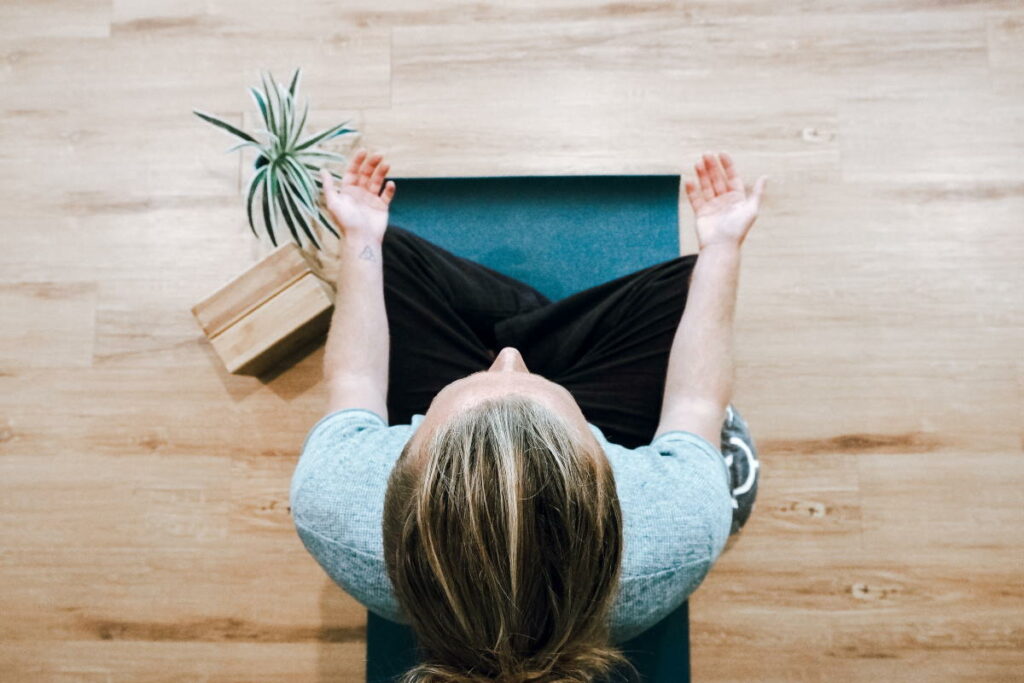
Mindfulness-based therapy for insomnia (MBT-I) is a type of psychotherapy that combines the techniques used in cognitive behavioural therapy for insomnia (CBT-I) with the careful cultivation of a present-focused awareness known as “mindfulness”.
Mindfulness is a process that teaches us to focus on the present moment rather than dwelling on the past or future. By practising mindfulness, we can identify negative and unhelpful thoughts (without judgement), understand ourselves better and enjoy our life to the fullest.
How does MBT-I work?
Mindfulness-based therapy for insomnia doesn’t just help people improve their habits and thoughts so they can sleep better. It also teaches them to “respond to sleep disturbance with mindfulness skills rather than react automatically by increasing effort to rest” (Ong et al., 2011).
Working with your therapist, you’ll learn to raise your awareness of your body and mind so that you can:
- Identify your current thought and mood patterns
- Understand the relationship between the way that you think and how you feel
- Discover why you feel so scared, anxious or frustrated before sleep
- Stop the downward spiral that can occur from a bad night’s sleep
- Know how to stop setting unrealistic expectations (“I need to get X hours of sleep tonight!”)
To achieve this awareness, patients will be taught a wide range of mindfulness exercises. The exact exercises will vary depending on the therapist in question, but we’ve picked out three examples to give you an idea of what to expect.
Three-minute breathing space
The three-minute breathing space is an exercise that consists of three simple steps:
- Spend one minute focusing on your current thoughts, emotions and physical sensations
- Use another minute to move away from your internal and physical state to focus entirely on the way that you’re breathing
- For the last minute, broaden your focus again and become aware of your whole body, its emotions and sensations
This exercise is a great way to stop yourself from ruminating on your anxiety, fears or general physical discomfort.
Body scan
It can be easy to forget our physical discomfort when we’re overly stressed. The body scan exercise is designed to help you tune in to your body and open up your mind to your sensory experiences—increasing your awareness of your mental and physical wellbeing.
It involves lying down with your eyes closed while focusing your attention on different parts of your body one at a time, usually starting at the toes and moving up to the top of your head.
Once the body scan is finished, you’ll bring your awareness back to the room you’re in by slowly opening your eyes and moving into a comfortable sitting position.
Mindfulness meditation
Mindfulness meditation involves sitting quietly and focusing on how each breath travels through your body. As this happens, you’ll want to pay attention to your current thoughts and emotions—feeling them shift and pass you by—without judgement.
Though you are witnessing these present thoughts and feelings, the goal isn’t to dwell on them. When you feel bogged down by your anxiety or frustrations, consider which thought triggered this and then return your focus to your breathing.
The purpose of these mindfulness exercises is not to help you relax just before bed. Though they can make you feel sleepy, they’re intended to help you reduce the stress and anxiety that can occur as a result of your sleep anxiety and insomnia.
How effective are CBT-I and MBT-I in treating sleep anxiety and insomnia?
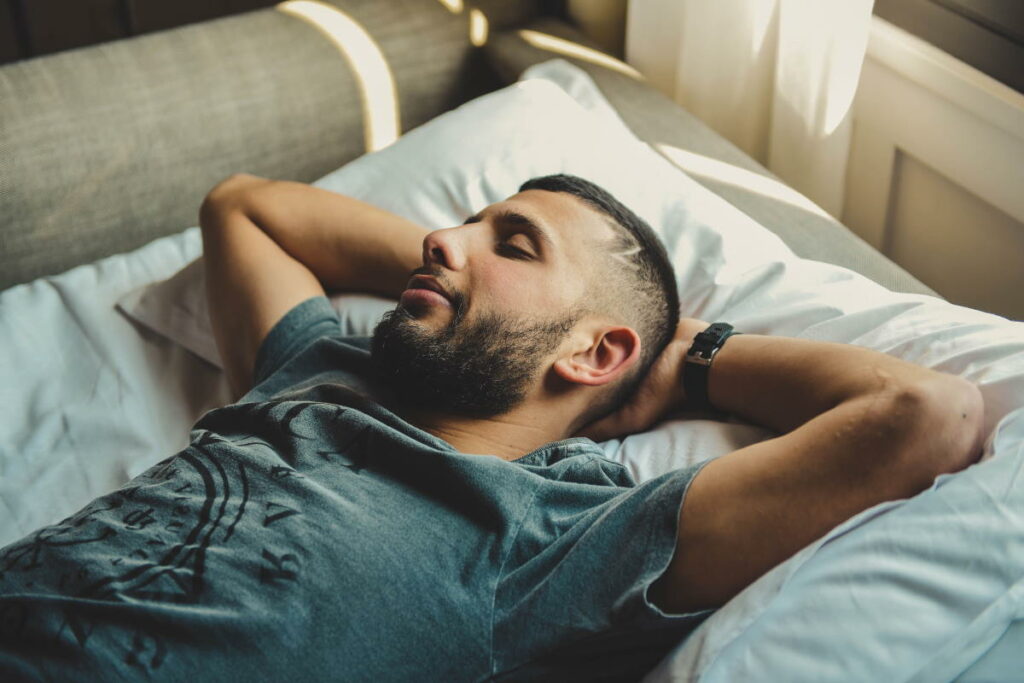
CBT-I is recognised as a first-line treatment option for chronic insomnia by the National Institute of Health and Care. Patients receiving CBT-I have shown improvements in falling asleep faster and for longer (Trauer et al., 2015). Some studies suggest that CBT-I is more effective than medications for some patients (Jacobs et al., 2004).
There’s also plenty of evidence to suggest that MBT-I is just as effective in treating those with insomnia and sleep anxiety. Studies have shown that patients experience significant improvement in sleep quality and efficiency (Peters et al., 2020), have diminished insomnia symptoms (Camino et al., 2022), and are far better equipped to cope with their mental states (Coffey et al., 2013).
The bottom line
If you’re suffering from long-term sleep problems, treatments like CBT-I and MBT-I are the best course of action. Rather than relieving some of your symptoms, these therapeutic approaches address the root cause of your problems and allow you to retrain your thoughts and feelings to achieve quality sleep.
As with any other therapy, however, CBT-I and MBT-I will require you to put a lot of time and effort into reframing your mind and changing your habits. It might not be easy to begin with, but it will eventually bear fruit.
Post Date:
Author: Bethany Hall
Explore More Articles
3 Mental Health Myths Your Therapist Is Sick of Hearing
It's great that more people are talking about mental health, but not everything you hear is necessarily true. Don't fall for these 3 mental health myths!
Feeling Worried? Challenge Anxious Thoughts with These Simple Questions
Stuck in a spiral of anxious thoughts? Use these 3 simple questions to challenge negative thinking and adopt a healthier mindset.
ManageMinds Explains... Narcissists
Even wondered if you or someone you know may be a narcissist? In this guide we cover what narcissistic personality disorder is, as well as the signs you need to watch out for.

